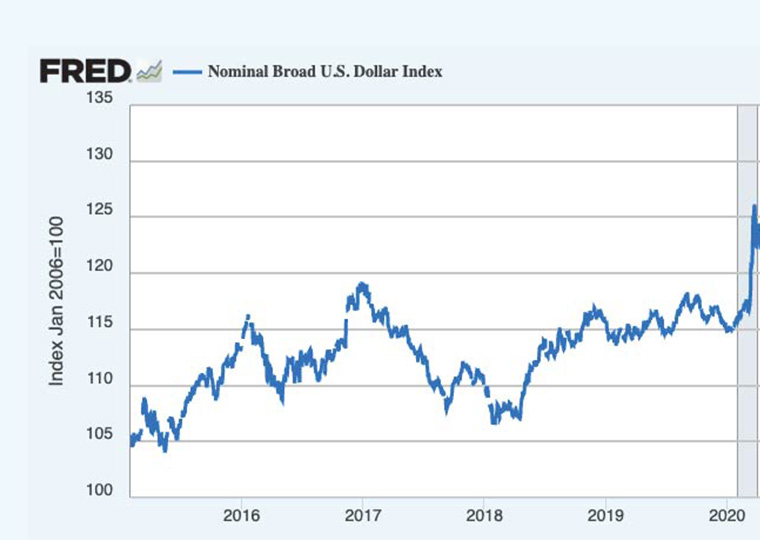Rethinking issues around productivity, income inequality and industry concentration
Back in 1975, intangible assets made up just 17% of assets on the balance sheets of S&P 500 companies. The category was largely ignored and understood to be a grab bag of goodwill left over from merger accounting, patents and other intellectual property. The category was somewhat suspect. In fact, the term tangible book value (the net worth of property, plant, equipment and inventory and such) was bandied about as a sign of corporate strength, implying the opposite for intangibles.
Less than 50 years later, intangible assets exceed 90% of total assets on balance sheets. This is due to the domination of software in the economy and tech companies becoming the heaviest weighted sector in the S&P 500 by market capitalization.
Opt In to the Review Monthly Email Update.
A working paper, by Northwestern’s Nicolas Crouzet and Janice C. Eberly, UCLA Anderson’s Andrea L. Eisfeldt and Northwestern’s Dimitris Papanikolaou, suggests that many changes in the economy over that 50-year period might be better understood if we had a stronger grasp of the properties of intangible assets and how they impact firms.
The researchers examined how intangibles can help explain recent macrotrends in the economy:
Inequality of Income and Wealth
When intangible assets become an important part of a firm’s overall capital, employees with the skills to work with these assets are in high demand. This may lead to increased inequality in income between these workers and other employees, whose more traditional skills are tied to physical assets.
Inequality also grows as the benefits from innovations are not shared widely. Entrepreneurs reap the greatest benefits.
Intangible assets may help explain the decline in investment in physical capital in recent years, even as returns on physical assets are seemingly rising. It sounds odd that investments in tangible assets would decline when the returns from operating them are rising. The researchers suggest this is a result of mismeasurement. The numerator of the measurement of return captures the market value of the entire firm (including the benefits of intangible capital), while the denominator only includes tangible assets.
Technological advances in storage of intangible assets — think of how software now sits in the cloud, operated by its maker, and is used simultaneously by millions of customers — has enabled the rapid increase in intangible assets in recent decades. Lack of storage means held back investment in intangibles.
Rising Market Power
An intangible asset, such as software or a patent, that is used simultaneously by multiple units at a firm and protected from imitation, by patent or other means, is likely to produce returns above its marginal cost since it creates economies of scale for the business. This advantage can lead to the firm winning a large percentage of its market and give rise to a situation similar to a natural monopoly — a market in which one large supplier has a cost advantage over competitors.
The researchers suggest that the recent slowdown in productivity growth may be partly because the current method of measurement doesn’t capture the positive spillover effect of intangibles, and that losses from spillovers can discourage growth. Positive spillover here means that the benefits of the intangible asset are not just enjoyed by the firm that owns the asset but are also experienced by other firms and individuals in the economy. An example of a positive spillover is an intangible asset — a piece of software, say, or a patent on a drug — that spurs the development of an even better idea at a competing firm. In this way, intangible assets can indirectly increase productivity at other firms but also disincentivize investment in spillover intangibles.
An intangible asset must be stored to be able to be financed and to have property rights to its future cash flows assigned. The costs of external financing will be higher if the manner of storage makes it difficult to be used as collateral. For example, intangibles stored in key talent or certain technical advances at the company are difficult for investors to evaluate, while intangibles stored in software can be pledged to outside investors. For this reason, firms with substantial intangible assets receive more financing from their own employees and founders than companies with fewer intangible assets.
Crouzet, Eberly, Eisfeldt and Papanikolaou hope that future research in this area will grow as more focus is directed toward the properties of intangible assets and the economic implications of those properties.
Featured Faculty
-
Andrea L. Eisfeldt
Laurence D. and Lori W. Fink Endowed Chair in Finance and Professor of Finance
About the Research
Crouzet, N., Eberly, J. C., Eisfeldt, A. L., & Papanikolaou, D. (2022). The Economics of Intangible Capital.






